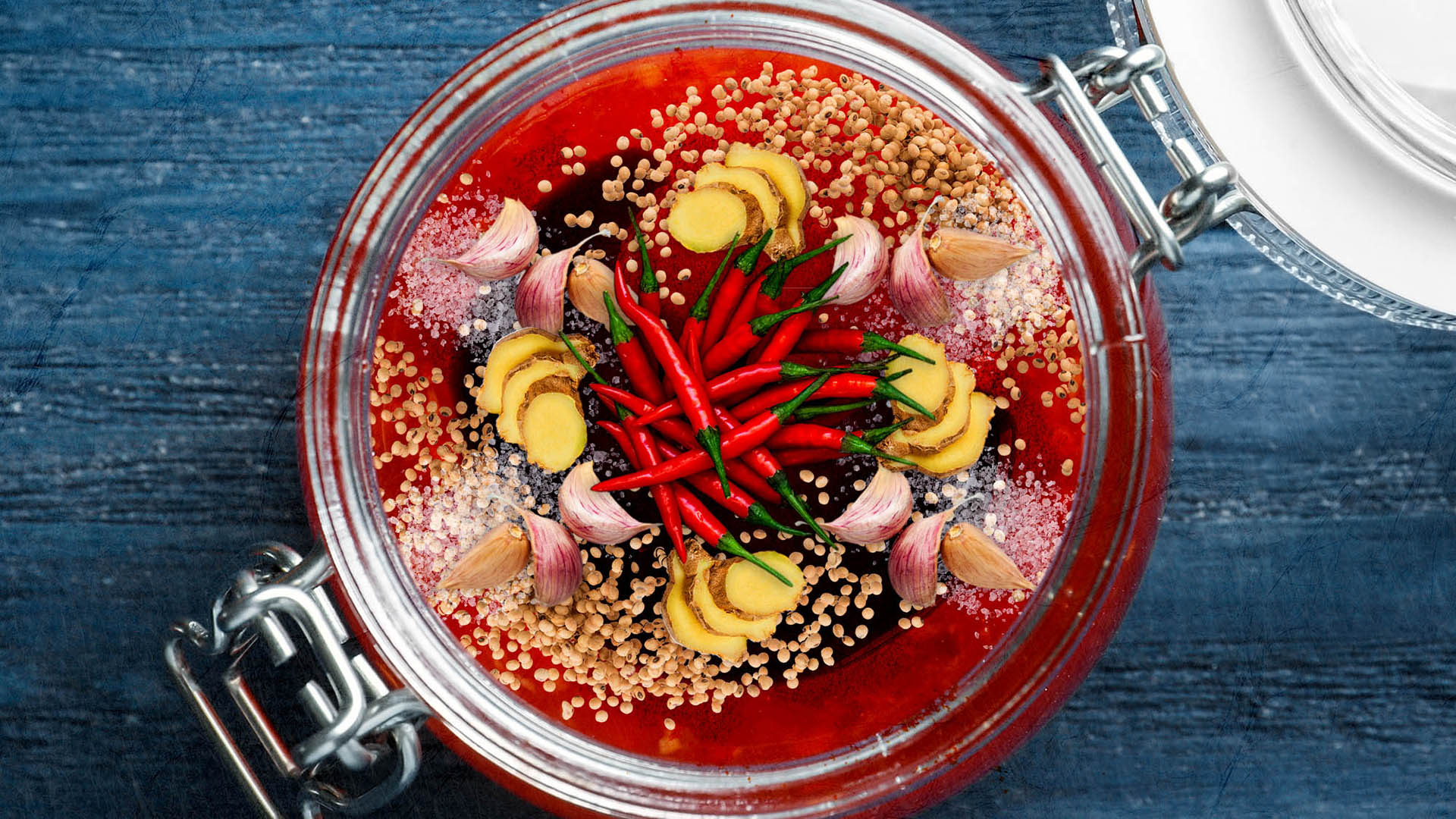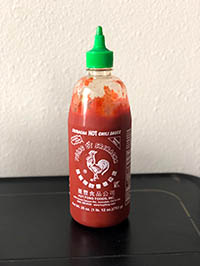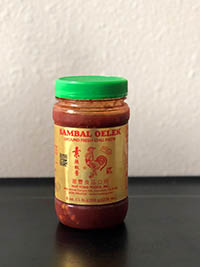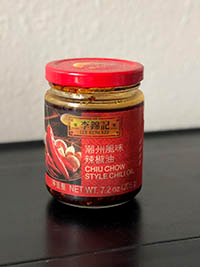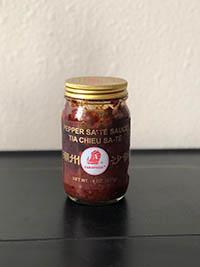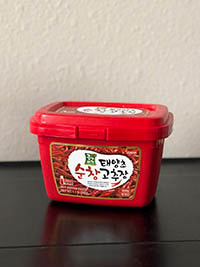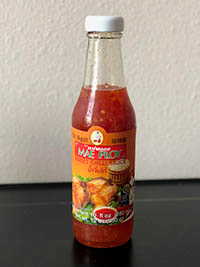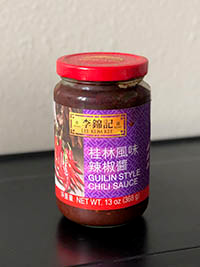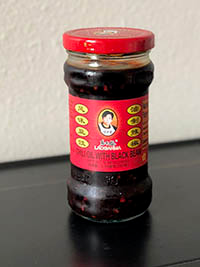The Beginner's Guide To Asian Hot Sauces
Down the street from my house sits a lovely Asian grocery called Saigon Market. I've been there dozens of times since moving to South Bend, Indiana, a year ago, mostly to pick up last-minute produce or ingredients I swore I had in my pantry.
Once or twice, I've picked up one of my favorite hot sauces, Marie Sharp's Hot Habanero Pepper Sauce—okay, maybe more than once or twice. But to find that sauce, I've walked past what I've discovered is the true gold mine: hot sauces from China, Hong Kong, Vietnam, Korea and other countries.

I didn't grow up around these sauces. My parents are great cooks, but they never had the desire for heat like I do. But holy smokes am I glad I found Saigon Markets' sauces. They opened up a whole new world of heat as I tested them on everything from egg rolls to fried chicken to pizza.
Sriracha
I've had this sauce before, and you probably have, too. It's... fine: chili peppers, vinegar, garlic, sugar, salt—not too far off most other hot sauces. It's got a good heat, but I find that it overpowers a lot of foods. Sriracha, for me, is best as an ingredient in a larger dish. I love putting it in soups and it works surprisingly well with Mexican dishes, though I'm much more likely to reach for an El Yucateco sauce if I'm having tacos.
Sambal Oelek
Having enjoyed Sriracha, I figured I would at least learn to love another chili product made by Huy Fong Foods. Nope. The heat on this went straight to my throat. Once the heat subsided a little bit, I was left with a taste of what I can only describe as shower cleaner. If you're looking for just heat, this will be your best bet on this list. But it doesn't have a lot to offer in terms of taste, unless you enjoy Scrubbing Bubbles. My buddy at Saigon Market said he has trouble keeping this stuff on the shelves, but I can't ever see myself buying it again.
Chiu Chow oil
Also known as Chaozhou, for the regional cuisine it's used in, this Chinese chili oil was best on fried chicken. It provided heat across the whole tongue, and I could definitely see myself using it on any fried food in the future. The only drawback is that you will need a lot of it to provide any heat or flavor. I had to liberally apply it to anything I put it on, and it did not stand up at all to the flavors in egg rolls. I'll probably end up buying a lot of this, if only because I'll have to use a few heaping spoonfuls every time I add it to my meals.
Pepper Sa-Té
This is what the Saigon Market owner suggested when I asked for a Hong Kong chili oil. It's made with chili flakes, salt, sugar, garlic, and a few other ingredients. But what really stands out are the shallots. I could taste them immediately in a marathon taste test of all the oils and pastes. This sauce provided plenty of heat, especially on the sides of my tongue, and just fantastic flavor.
Gochujang
This Korean sauce earned a one-word review in my notes: "Undefeated." This stuff, more a paste than a sauce, is good on everything. Pizza? Delicious. Egg rolls? Amazing. Fried chicken? It's so good. (Try it on bacon, too!) This stuff is made with barley malt powder and is fermented, so maybe the beer geek in me is drawn to that. In any case, I could eat this with every meal, and I just might. The only drawback is that the thicker texture might not be right for all meals. It's tasty enough that I don't care.
Mae Ploy
Even though this is a somewhat generic title for sweet chili sauces from Thailand, I was able to find the actual brand-name Mae Ploy. This stuff is sweet. There's almost no heat. It's possible that in large quantities, you might get a little bit of a heat buzz from this sauce, but I'm pretty certain you'd get a cavity first. The bottle suggests it would be good on chicken, but I found that, strangely, the salt and sugar really clashed in a way I've never tasted before. On egg rolls, though? Perfect.
Guilin chili oil
Another Chinese sauce, this also earned a one-word review in my notes: salty. I really can't think of a single meal this would improve. I should have known when three out of the first four ingredients mention salt, including salted chili peppers. If you're desperate for sodium, I can see using it to help retain water? But if you've used even a pinch of salt in your meal, steer clear. It was far too much on pizza and just past enough on egg rolls. I think I can still taste the salt bomb that resulted when I put it on fried chicken.
Laoganma chili oil with black beans
When I finished gathering all my sauces, I asked the shop owner if he had any suggestions. He walked straight to this sauce, saying he was impressed by the texture and the heat. I loved the heat of this, but it's nearly impossible to add to anything handheld. It's got an oil base, but it's mostly these crispy beans that would be perfect to add to a chicken or vegetable dish or even a soup. But it's frankly just not very easy to scoop onto an egg roll or fried chicken. It's got a little rolling heat, and the black beans give it a texture that is unlike any hot sauce I've tried before.
Before this journey through East Asian chili oils, sauces, and pastes, I knew there was a world more heat out there. But I wasn't totally aware of the subtleties of strangely attractive, chili-derived pain paired with (mostly) delicious, warm flavors, and how successfully these sauces build on dishes without destroying them.
Pepper Sa-Té and Gochujang have already been added to my usual roster of "goes on everything" sauces. I think I'll use the Laoganma chili oil in my favorite slow-cooker chili recipe once the weather cools down. Beyond that, I'm excited to try to find the best uses for the other sauces. Except for Guilin chili oil. I think I'll just leave that in the back of the fridge.
